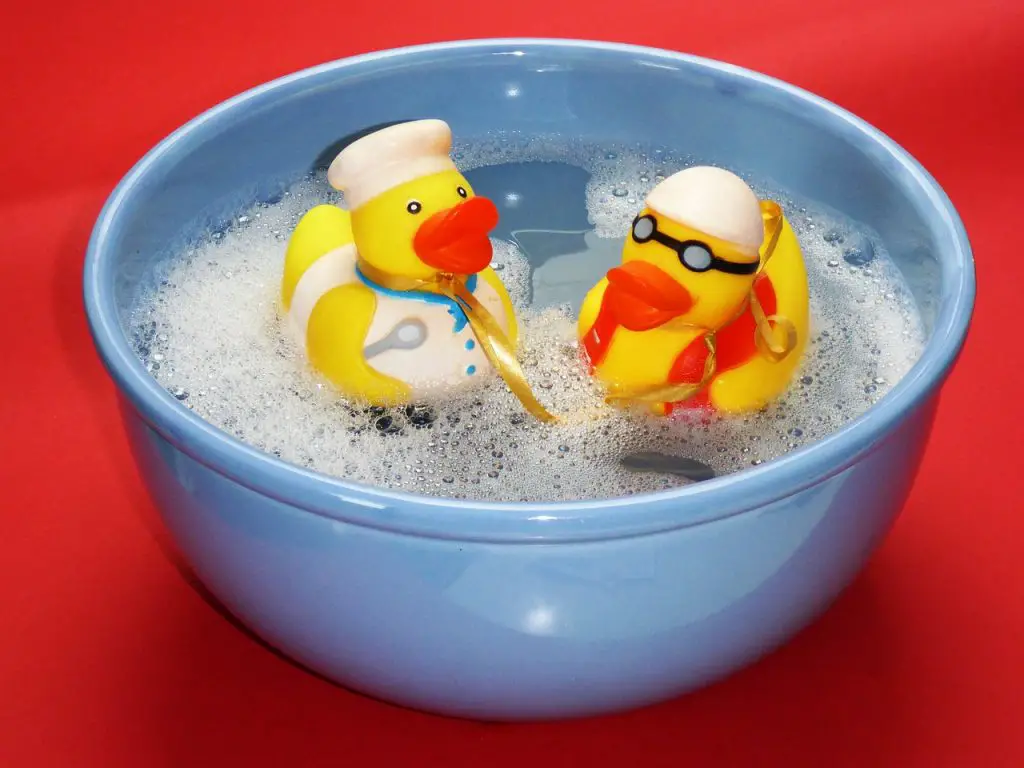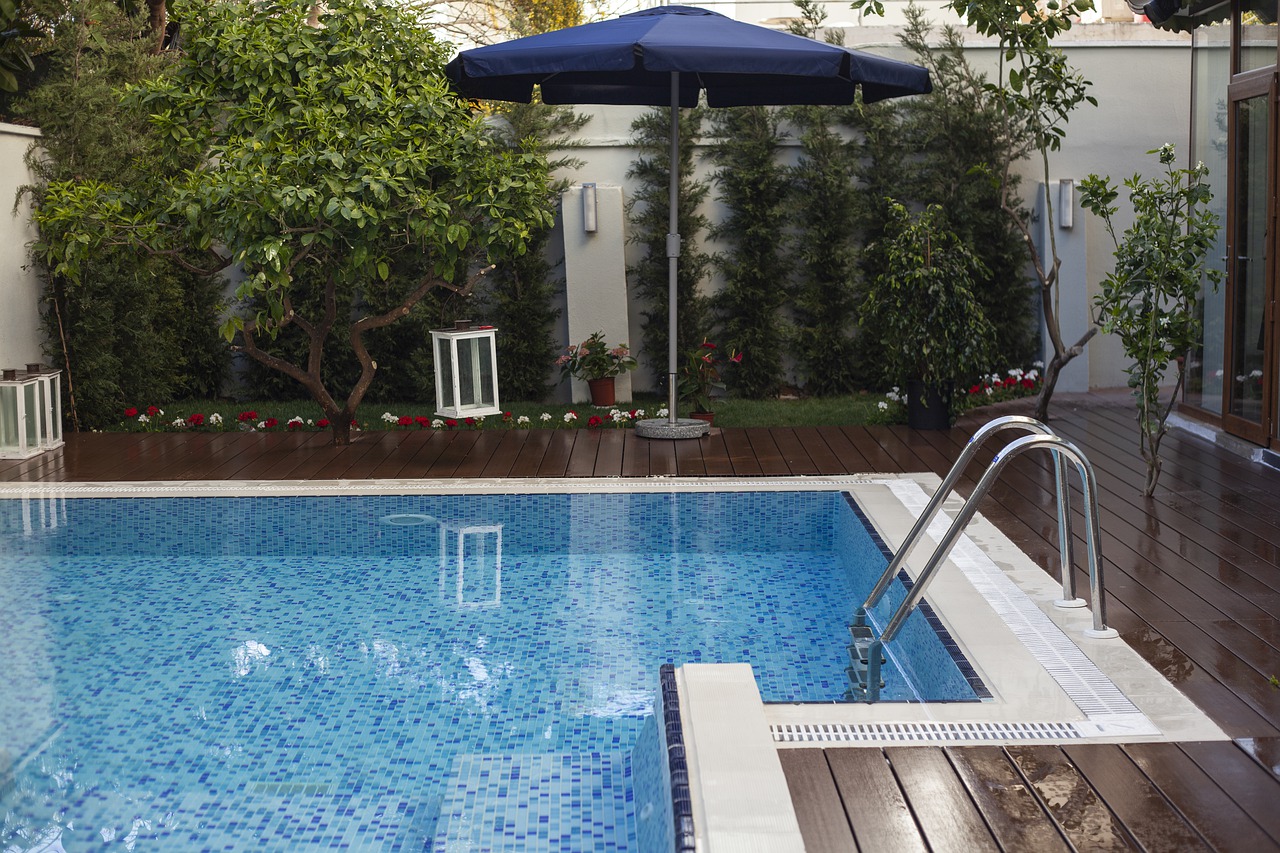Pool foam often looks just like bubbles that come from the pump jets, but when those bubbles gather on the surface and don’t go away, they can look unsightly and are an indication that there is something wrong with your pool water.
Thankfully, pool foam is quite easy to get rid of, and, by following a good hygiene regime is even easier to prevent. It is normally caused by dirt or the incorrect levels of chemicals that are in the water.
What is pool foam?

 Many pool owners think that pool foam is just a collection of bubbles that sit on the surface and have not popped.
Many pool owners think that pool foam is just a collection of bubbles that sit on the surface and have not popped.
Pool foam is, however, more than just unpopped air bubbles and is actually a combination of air and organic materials that are affecting the quality of your pool water.
If you have foam in your pool then this is sign that the disinfectant in your pool is struggling to get rid of the dirt in your water which makes the water ‘thick’ and results in foamy bubbles floating on the surface.
Just like soap in a bath, agitation of the water by the jets or by bathers will make more bubbles that will sit on the surface of the pool, turning into foam.
What causes pool foam?
Pool foam can be caused by a variety of things but the main cause is the people that use the pool.
Things such as hair gel, fake tan, anti perspirants and other body products can all combine, resulting in dirty water which, in turn, can cause pool foam.

How to prevent pool foam – always shower before you get into the pool and encourage the other pool users to do the same.
You don’t need to use soap or shampoo before swimming, just s good shower with clean water to remove hair products and soaps will help.
How to fix pool foam – Chlorine based pool shock is the best solution. You should shock your pool initially using an approved ‘pool shock’.
This will destroy the dirt and other bacteria that cause the foam and will help to return your water to a clean and sparkling condition.
[amazon box=”B00BGNLUV8″ template=”horizontal” title=”Chlorinating Pool Shock Treatment” description=”Fast acting and powerful swimming pool sanitizer that kills bacteria, controls algae and destroys organic contaminants that cause pool foam. “]
Lots of pool users
Having lots of bathers will multiply the effect of all of that hair gel, dirt and toiletries which means that your pool water will get dirty very quickly.
When you also factor in the amount of sweat, urine and faecal matter, the levels of dirt quickly adds up.
Even if your bathers don’t urinate in the pool, they will still deposit small amounts of urine and faecal matter into the water due, in part to water pressure on their bodies and also, in some cases, poor standards of personal hygiene.
The best way to deal with it – is to regularly shock your pool to destroy the organic waste.
The best way to prevent it – is to make sure that bathers use the toilet before getting into the pool and to be strict about them showering before they get into the water.
If your bathers don’t do it then maybe you could explain to them the reasons and that they’ll be swimming in other peoples’ sweat and bodily emissions?
They might shower when they understand.
Clothing and detergents
You should discourage people from using your pool if they are wearing anything other than swimming costumes.
Clothing, such as t-shirts and shorts can contain a variety of chemicals left over from laundering and machine washing, and these will get into your swimming pool water.
Even if you do not swim in clothes, the soaps and detergents get onto your skin just through wearing them and, if your users do not shower, then these get into the water resulting in pollution which can cause foam.
The best way to prevent these detergents from getting into your pool is to make sure that your bathers always shower before they enter the water.
If you experience water issues from detergent then the answer is to shock the pool.
You can also consider changing your laundry detergent to one that is ‘detergent free’ which will reduce the levels of soap and other contaminants getting into your pool.
Pool chemical levels
If there are issues with the levels of disinfectant in your swimming pool then it is possible for your pool to have problems with foaming along with other water complications.
Regular testing of your pool water is one task that should be high on your daily list of pool maintenance activities.
[amazon bestseller=”swimming pool chemicals” items=”5″ template=”table”]
Most commercial pool plant operators test their swimming pools at 2 to 3 hour intervals and, as a home pool owner/operator, you should aim to check your pool levels at the start and end of the day and, depending on how busy your pool is, at least twice when it is in use and ideally more.
To test your pool you will need a pool testing kit. These come in different forms from testing strips, to photometer devices through to the best testing kits which use a beam of light to analyse the water.
What to do – When you test your pool water you are checking 3 areas every time that you test.
These 3 areas will give you an indication of what is going on with your water and will enable you to control the chemical levels accurately.
- Free Chlorine Levels – The free chlorine is tested first. Free chlorine is the amount of chlorine that is available to disinfect the pool. We can call this good chlorine for ease of understanding.
- Combined chlorine – This is the level of chlorine that has bound itself to dirt and other contaminants. We can call this bad chlorine for ease. The level of combined chlorine should never be higher than 1 part per million and should never be more than one half of the free chlorine levels.
- Ph – The Ph level of your water is important, both from a bather comfort perspective and also from your equipment perspective. Chlorine is alkaline and raises the Ph and, if this is not controlled it can become dangerous for bathers and can damage your pool. You should seek to maintain a Ph of 7.2 to 7.6 at all times.
Fast Pool Foam Solution
Dealing with foam in your swimming pool is not difficult but it can take some time for your actions to work.
If you shock your pool then you cannot swim in it until the chemical levels have returned to normal and are safe for bathing.
This is fine unless you need to use the pool quickly for a party for example.
Thankfully all is not lost and there are treatments that you can use on your pool that will work quickly and leave the water safe for use. These are called de-foamers.
When you use a de-foamer in your pool, the foam will disappear almost immediately which will allow you to use the pool.
However, it will not get rid of the problem that caused the foam in the first place and you will need to address the issue or the foam will quickly reappear.
Conclusion
Foam can appear within your pool at any time and is more likely during periods of heavy use.
If you maintain the need for cleanliness from your bathers by encouraging them to shower you will reduce the risk of foam.
Use pool shock regularly, at least once a week if you have a busy pool and always test your pool water to help you to maintain accurate chemical levels.










